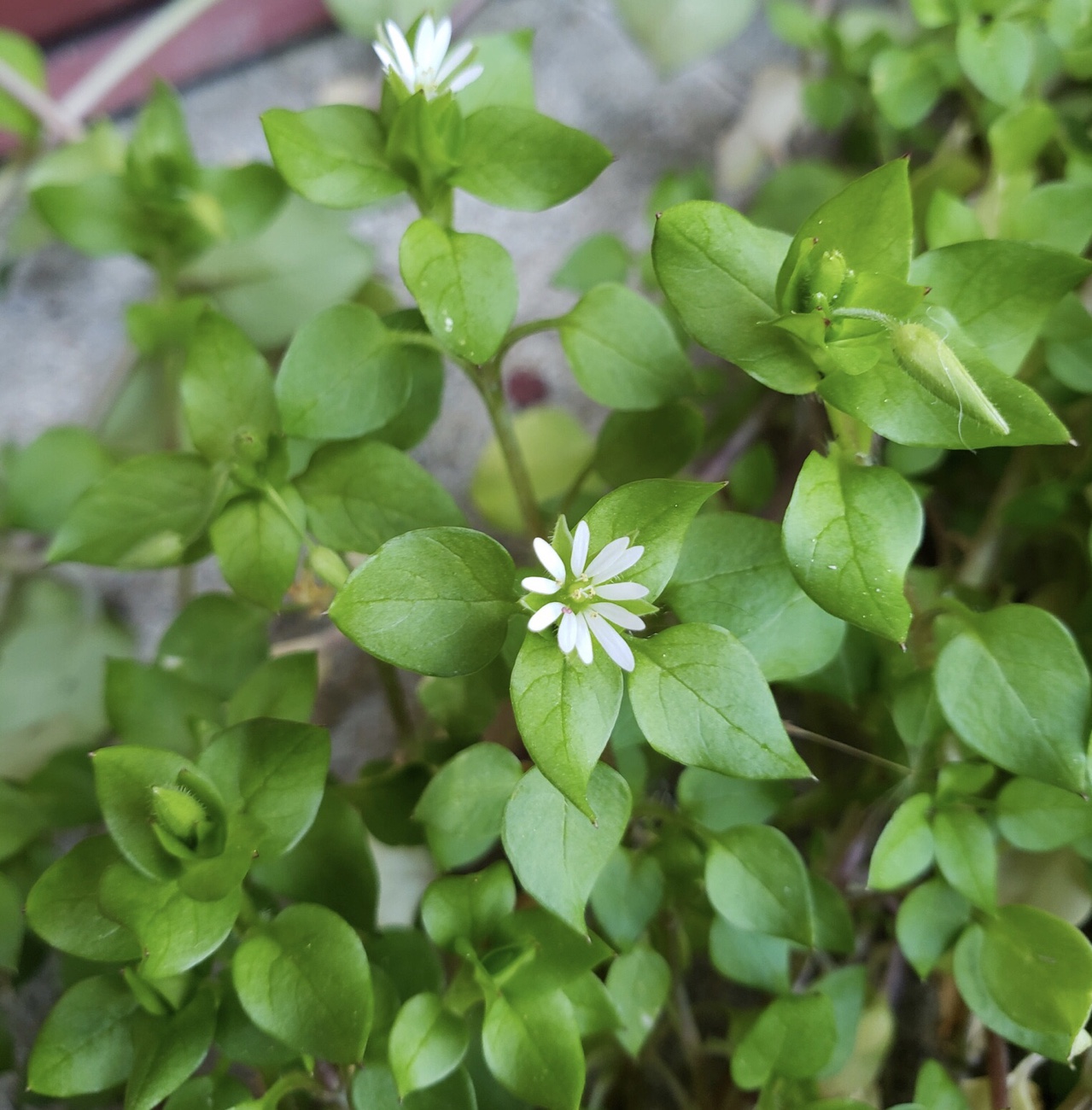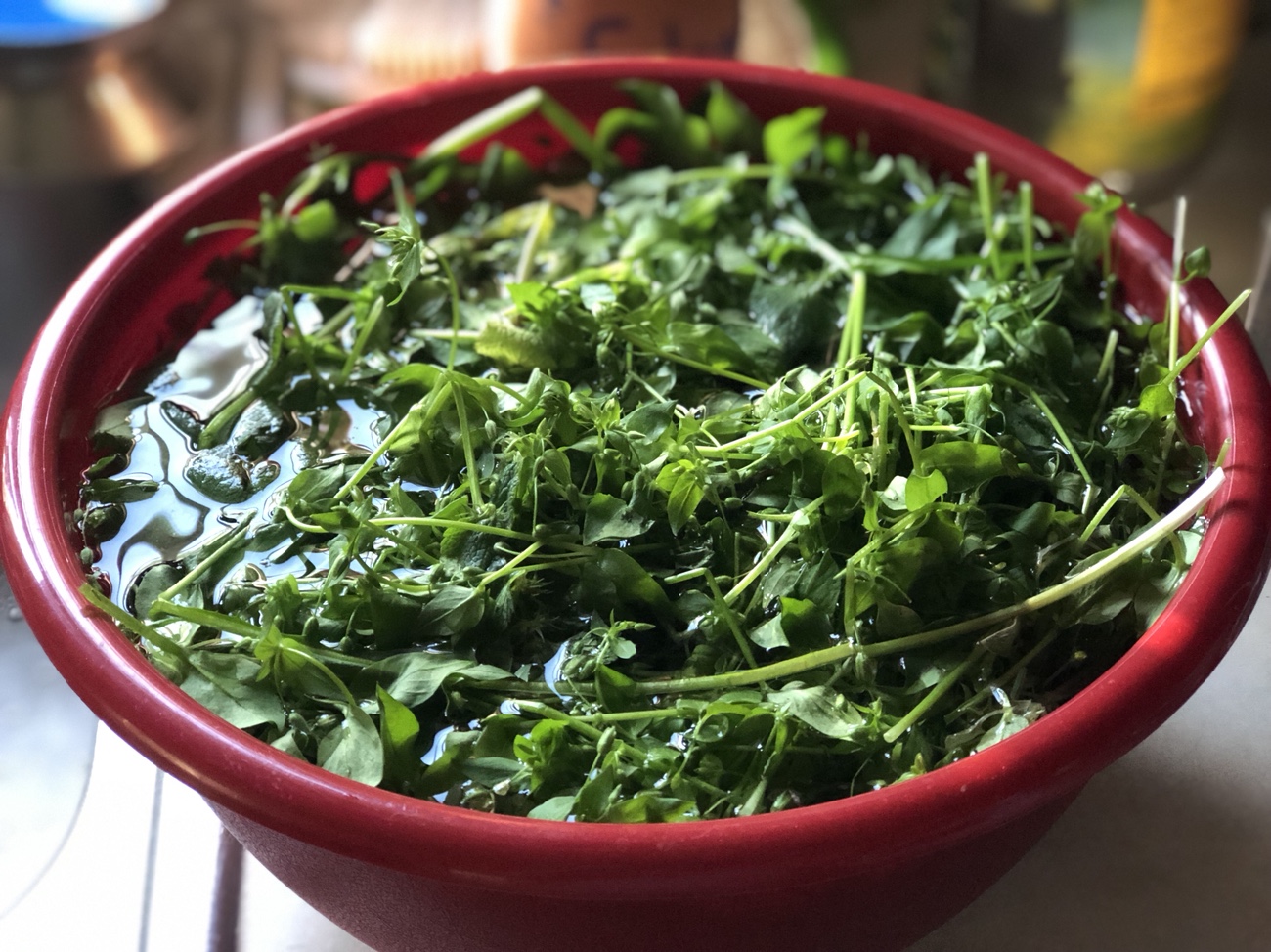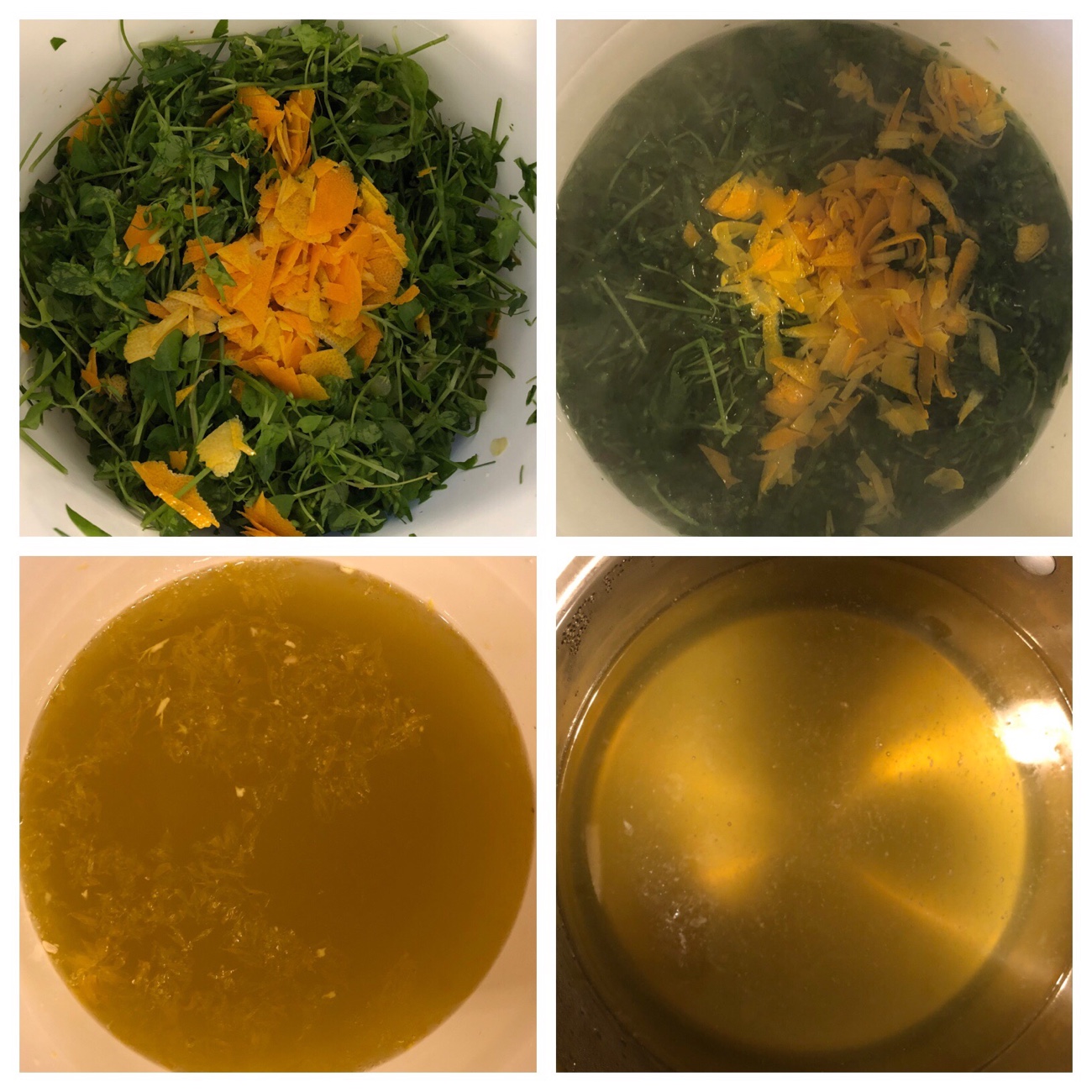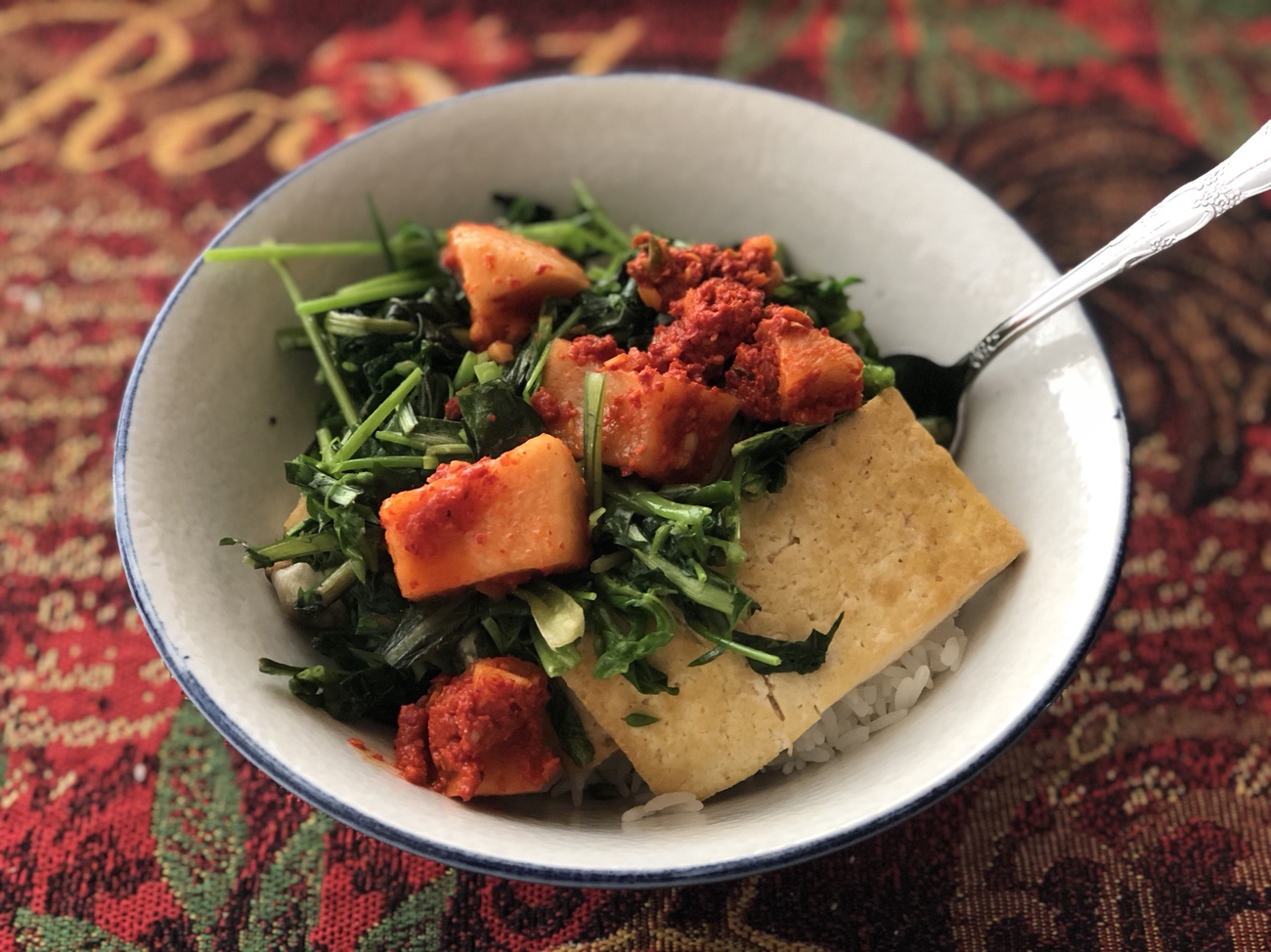
Each year, it seems like a different plant goes gangbusters in the pastures. Two years ago, it was red clover: so plentiful, it seemed like it was everywhere. Sadly, despite my plans to make something delightful with it, last year was a red clover bust. This year, the standout plant is the delicately white-flowered chickweed.
Common chickweed is an unassuming plant that just seems to blend into the background of the pasture. Considered a weed, some people choose to try to eradicate it from their lawns; I, on the other hand, embrace it, along with dandelions, violets, and other useful and/or edible wild plants. Frankly, thinking we can win the “battle” against the “weeds” is folly, anyway.
Chickweed also has a number of health benefits. It can be infused into a skin-soothing salve or made into tea. As with any plant, you must be absolutely certain that you have accurately identified the plant before consuming or using it.

I easily gathered up a bunch of it to make chickweed wine from Jack Keller’s recipe. As with most herbal wines, it begins by making tea from the plant, then adding sugar (to fuel the yeast), citrus (for an acid and for flavor), yeast nutrient, and yeast.

It’s been fermenting for a few days now and is very active, hissing audibly when the lid is opened. In a couple of days, I’ll move it to a secondary fermentor with airlock and leave it be for a month, then rack it. Keller says that it should age for at least a year, but I think I’ll be sampling it earlier!
Chickweed is also tasty sautéed with some dandelion greens and a bit of garlic. Atop fresh jasmine rice and browned tofu, with a side of spicy radish kimchi, it adds a pop of color and contributes to a nutritious meal. More weeds, please!

